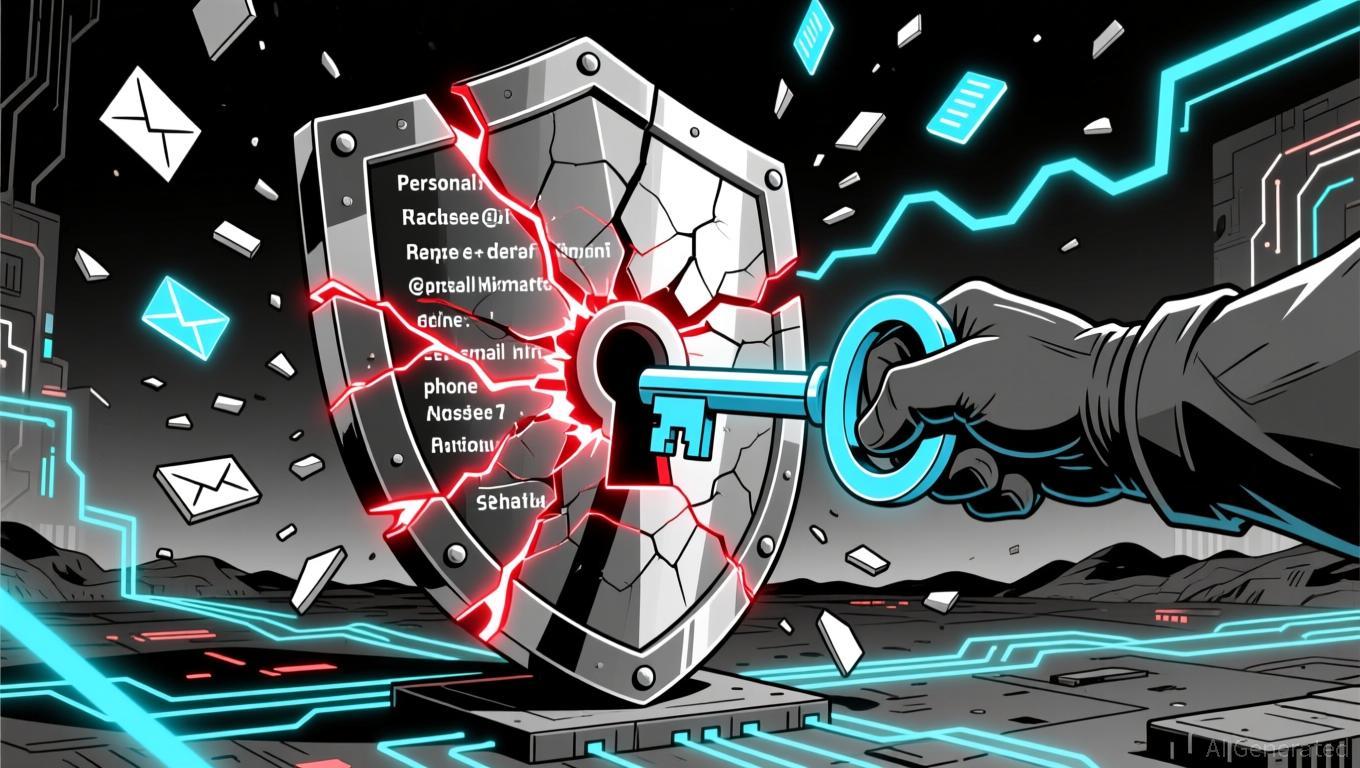Vitalik Buterin's Latest Advances in ZK Technology and Their Impact on the Crypto Ecosystem
- Vitalik Buterin's ZK advancements resolve Ethereum's scalability-privacy trilemma, enabling 43,000 TPS with near-zero fees via GKR protocol. - Kohaku framework introduces modular privacy tools like Railgun, making confidential transactions default for Ethereum wallets. - ZK rollups (zkSync, StarkNet) now hold $3.5B TVL, driven by institutional adoption for RWA tokenization and confidential settlements. - Regulatory clarity and Ethereum's zkEVM integration position ZK as core infrastructure, with 70% lowe
Vitalik Buterin’s ZK Innovations: Advancing Scale and Privacy
Buterin’s research on the GKR protocol has transformed the cost structure of ZK verification. By cutting verification expenses by as much as 15 times in theory and 10 times in real-world scenarios, GKR has empowered platforms like ZKsync to reach 43,000 transactions per second (TPS) with minimal fees
In addition to scaling, Buterin has led efforts to combine ZK proofs with multi-party computation (MPC), fully homomorphic encryption (FHE), and trusted execution environments (TEE). These integrations boost security for solutions like private voting and confidential state queries

ZK’s Journey: From Specialized Use to Institutional Standard
The uptake of ZK technology has surged between 2023 and 2025, propelled by improvements in scalability and growing institutional interest. The Atlas Upgrade for ZKsync in October 2025 delivered 15,000 TPS and seamless Ethereum compatibility, paving the way for real-world asset (RWA) tokenization
The total value locked (TVL) in ZK rollups such as zkSync, StarkNet, and Scroll has now surpassed $3.5 billion, signaling strong institutional trust in ZK’s cost-effectiveness. For example, transaction fees for high-frequency trading on ZK platforms have fallen by 70% compared to 2023
The Ethereum Foundation’s focus on zkEVM integration at the Layer 1 level has further established ZK rollups as the go-to scaling method. Legislative clarity from the U.S. GENIUS and CLARITY Acts has also eased regulatory concerns, setting the stage for ZK rollups to become the backbone of blockchain infrastructure
Investment Outlook: ZK Technologies as a Strategic Long-Term Bet
The intersection of technical progress and institutional embrace makes a strong argument for ZK technologies as a promising long-term investment. Key factors include:
- Scalability Economics: The near-zero transaction costs enabled by ZK rollups make them ideal for widespread applications, from DeFi to tokenizing real-world assets.
- Privacy as a Standard: Kohaku’s modular system and tools like Railgun are poised to become mainstream for wallets, driving further adoption within Ethereum’s network.
- Institutional Partnerships: Collaborations with established organizations and clearer regulations are pushing ZK use beyond the crypto-native sphere.
- Venture Capital Support: The Ethereum Foundation’s zkEVM initiatives and ongoing VC investments in ZK startups point to continued innovation.
Nevertheless, challenges persist. ZK technology is still maturing, and competition from other scaling solutions, such as optimistic rollups, could impact its growth. Shifts in regulation or technical hurdles may also slow broader implementation.
Conclusion
Vitalik Buterin’s ZK advancements have not only tackled Ethereum’s scaling limitations but have also reimagined what’s possible for blockchain privacy and security. As ZK rollups reach institutional scale and regulatory frameworks become clearer, the long-term investment case for ZK technology grows stronger. For those looking to invest, the focus should be on platforms and frameworks that align with Ethereum’s vision, such as
Disclaimer: The content of this article solely reflects the author's opinion and does not represent the platform in any capacity. This article is not intended to serve as a reference for making investment decisions.
You may also like
Bitcoin News Today: Bitcoin Faces $95K Standoff: Death Cross Clashes with Bullish Optimism Amid Bear Market Battle
- Bitcoin fell to a six-month low near $94,000, with a "death cross" signaling prolonged bearish trends and triggering investor alarm. - Technical indicators show mixed signals: RSI near oversold levels and key support at $93,000–$95,000 tested, while structural resistance looms above $96,500. - Market fear intensified as the Crypto Fear & Greed Index hit 10, whale activity surged, and institutional outflows worsened amid ETF uncertainty and macroeconomic shifts. - Analysts note potential bullish signs lik

DASH rises 20.83% over the past week despite earnings results and consequences of data breach
- DoorDash's stock rose 20.83% in 7 days despite a 6.58% 24-hour drop, driven by strategic partnerships and retail expansion. - Collaborations with RBC and Old Navy expanded DashPass access and apparel delivery, reinforcing its omnichannel growth strategy. - A cybersecurity breach exposed user data via social engineering, prompting enhanced security measures and external investigations. - A $18M Chicago settlement over deceptive practices highlighted ongoing legal challenges amid mixed stock performance an

Bitcoin Updates: In a Bold Move Against the IMF, El Salvador Ramps Up Bitcoin Purchases to Assert Independence
- El Salvador's government bought 1,098.19 BTC ($100M) amid market downturn, boosting total holdings to 7,474.37 BTC ($688M) as part of its "buy the dip" strategy. - President Bukele defies IMF criticism over public-sector Bitcoin purchases, emphasizing financial sovereignty through blockchain-based accumulation. - The country's aggressive accumulation has positioned it as the fifth-largest Bitcoin holder globally, inspiring other nations like the Czech Republic to explore crypto adoption. - Despite being
Bitcoin News Update: Short-Term Investors Face Losses as Bitcoin Falls Under $95K
- Bitcoin fell below $95,000 on Nov 15, erasing 23% from its October peak amid extreme fear signaled by a 10-point Fear & Greed Index. - 2.8 million BTC held under 155 days are underwater, with STHs driving 90% of recent sell volume as SOPR dipped below 1 repeatedly. - Institutional outflows ($870M from US ETFs) and Fed policy uncertainty (53.6% Dec rate cut chance) intensified liquidations exceeding $600M in hours. - Analysts split between bearish corrections to $85,000 if $92,000 support breaks or mid-cy